Japan is a beautiful cultural jewel. And Asia, in particular Japan and China, is a top priority market for many western businesses, meaning CEOs are in and out daily. If you do happen to be travelling that way, CEO Today has put together a quick guide to the best stays, views and experiences across Japan, for any time you get spare on your business trip. All of which are well worth making the time for.
Hokkaido - Niseko
Positioned as northern Japan’s powder paradise, Niseko’s biggest selling point is guaranteed snowfall, with more feet of the white stuff per season than any other ski resort in the world. Of the four ski areas located on the mountain, the Grand Hirafu Village area boasts the most contemporary restaurants and accommodation options, with no language-barrier concerns: English is spoken almost everywhere.
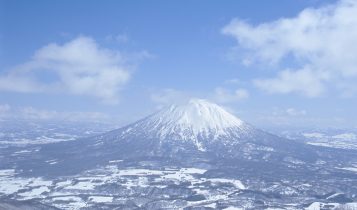
Night skiing, seemingly limitless backcountry opportunities (permitted by relaxed local policies) and healing hot springs for the end of long day on the slopes are the perks of passing winter in Niseko, whilst reveling in Hokkaido’s unbeatable natural scenery - without the overwhelming summer humidity experiences across Japan’s other main islands - make up the joys of summer. From April through to October, visitors can take advantage of Niseko’s quiet and plentiful golf courses, take to the trekking trails of Mt Yotei, raft the Shiribetsu River or sit back with Hokkaido’s delicacies; barbequed lamb and locally made milk ice creams.
Must Stay:
Ski-in, ski-out boutique hotel Ki Niseko offers stylish apartments overlooking the majesty of snow-topped Mt Yotei. The property is the nearest to the ski slopes of Grand Hirafu - just a snowball’s throw away - and offers private hot springs.
Tokyo
Never to be missed, the throbbing, ever-moving front presented by this neon-lit capital belies the spots of tranquility dotted along its back streets - where seemingly innocuous doorways host Michelin-star, 8-seater restaurants, and tiny alleyways lead to tranquil, perfectly manicured Japanese gardens, tea rooms and sake bars.

There are plenty of ways to take in the sights of the capital - from one-in-a-lifetime helicopter ride over the head of this vast city, through to traditional wooden boats (known as ‘yakatabune’) which sail Tokyo Bay and the Sumida River - passing Tokyo Skytree and the Rainbow Bridge en-route. High speed trains can also whisk you away to the coast for day trips in under an hour, or take you to hot-spring laden regions with views of Mt Fuji.
Must Stay:
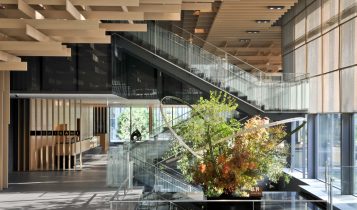
The Capitol Hotel Tokyu, nestled directly between Japan’s parliament building and the 500 year old Hie Shrine, offers a tranquil oasis of water features, gardens and contemporary design, with discreet service, panoramic views and traditional touches like sliding paper doors. The hotel offers staying guests an array of exclusive experience packages - from geisha accompanied dinners through to sumo tours and private Shinto ceremonies.
Shima Peninsula - Mie
With the morning sun rising over the greens and blues of the islets dotted around the Ise Shima National Park, it’s often difficult not to wonder whether you’re in Japan, or if you’ve woken in the middle of the Med.
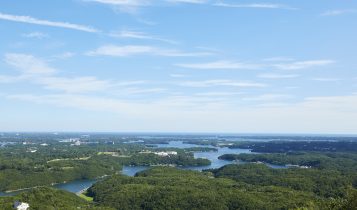
Along the Shima Peninsula, accessible via train from Nagoya, some of Japan’s most loveable scenery sits enveloping its most important monuments, such as Ise Jingu Shrine - the country’s most significant Shinto site, which sits inside acres of sacred, tranquil forests, dotted with wooden ‘torii’ gates. Nearby, the quaint, old-timey wooden shop fronts of Okage Yokocho house family-run businesses selling crafts and snacks, made using methods handed down for generations. Forget the flashiness of Tokyo’s Ginza; this is the place to shop for genuine Japanese crafts, and to spend a day or two sampling the delicacies which make Japan home to the world’s only UNESCO World Heritage registered cuisine.
If time allows, a visit to see the ama divers (female free divers ranging in age from 20 - 80) for a lunch of freshly caught seafood whilst overlooking the ocean and chatting to these fascinating women, is not to be missed.
Must stay:
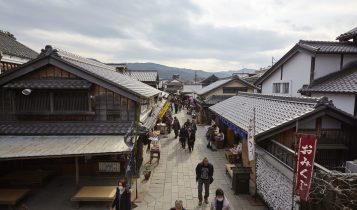
The inaugural hot spring resort from the Aman group, Amanemu is set in acres of countryside far from the towns and cities in Ise Shima National Park. The resort boasts 28 suite rooms overlooking Ago Bay, and is a temple of serenity and minimalism, with guest villas sizeable enough to house a large family reached by staff-driven golf buggies. The rooms’ deep set baths, fed by local springs, open on to the villas’ balconies, where daybeds welcome guests to while away the day with nothing more to distract than birdsong and sea air.
Karuizawa
A second-home haven for Japan’s VIPs and celebrities, Karuizawa is a mountain town with an air of sophisticated chic - just an hour from Tokyo on the bullet train.
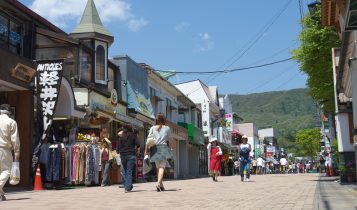
Historically founded by Europeans and set up as a getaway destination for the rich and famous - somewhere to escape the summer heat of the muggy capital - Karuizawa has maintained the airs of a stylish resort town, with an array of luxury shops at the Prince Shopping Plaza and upmarket cafes and restaurants in contemporary courtyard area Haruine Terrace.
Kyu-Karuizawa - the heart of the old town - is filled with antique stores and a historic atmosphere, whilst nature tours run by local guiding company Picchio offer visitors the chance to spot Karuizawa’s abundance of free-roaming wildlife; from flying squirrels through to Japanese Serows and black bears.
Must stay:
Hoshinoya Karuizawa styles itself as a resort village hidden away in the countryside, amidst forests, rivers and birdsong. Villas mimicking the style of old Japanese houses are set out around a central pond, and contain tatami mat rooms and the feel of a traditional ryokan, whilst maintaining all the luxuries and comforts of a 5* property. The restorative waters of Tombo no Yu hot spring are the ideal way to get in the mode for a deep, restorative sleep, no matter how heavy the cloak of jet lag.
Yakushima
Finally, in the very south of Japan, surrounded by the Pacific Ocean, is Yakushima; Japan’s UNESCO World Heritage island, blanketed in a forest of ancient cedars.
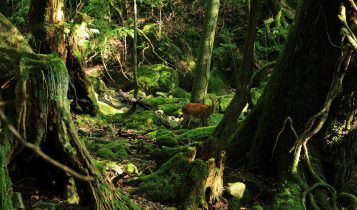
This hiker’s paradise is home to quiet, beautifully maintained trails which wind themselves up and around the island’s peaks, culminating at Jomon Sugi: the enormous 7,000 year old cedar tree, thought to be the oldest in the world. Shops along the islands’ main road, which circles its circumference and is drivable in around three hours, sell artisanal cedar products hand-made by local craftsmen.
Beyond the forests of the National Park lie sandy beaches, picturesque green tea farms and natural hot springs which are nestled into the sea and only appear twice a day during low tide; the perfect place to sit beneath the stars and marvel at the tranquility. With no 7/11s or neon lights in sight, Yakushima is a world away from the typical image of Japan, and in place of crowds of people it teems instead with wildlife; from free-roaming monkeys and deer, who happily take up space along the mountain roads, through to baby sea turtles, who from May - October poke their heads above the sands of Yakushima’s beaches for the first time.
Must Stay:
The 29-room luxury Sankara Hotel & Spa is this island’s gem - with unobstructed views of the Pacific Ocean and nestled in acres of pristine nature.
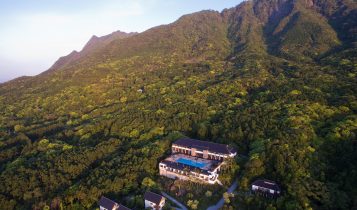
Attentive staff and butlers are on-hand to arrange an array of island experiences for guests - from guided hikes through the cedar forests, through to star-gazing and night-time safaris. The hotel’s two restaurants boast fantastic, locally-sourced menus which alter daily - and guests are welcome to pick herbs and ingredients with the chef, discovering exactly how dinner will be made that evening. A no-child policy makes this an ideal honeymoon finale - and a complete break from high-rise heavy cities and the constant noise of modern life. Unknown to most overseas visitors, this resort is a haven of tranquility and breathing space.











